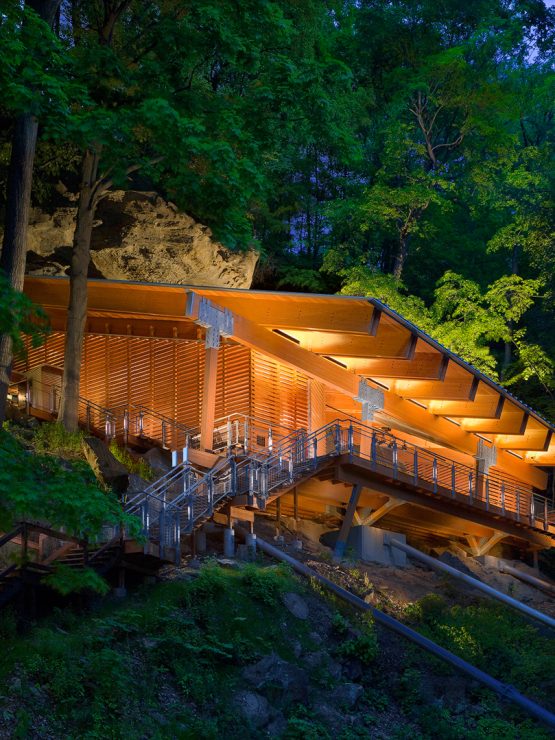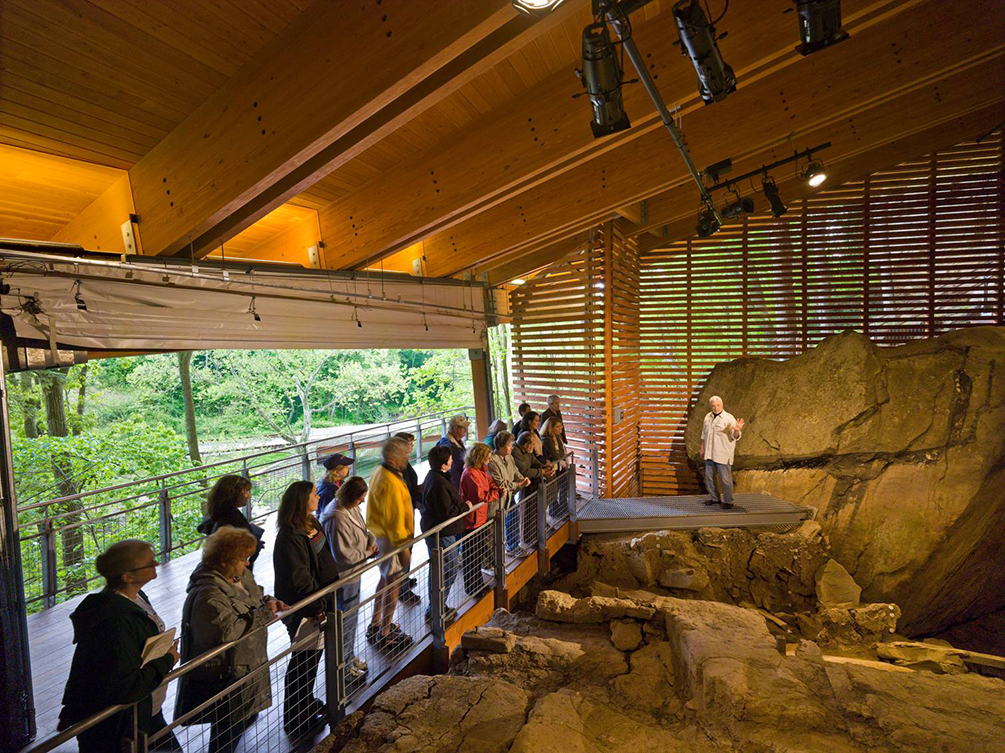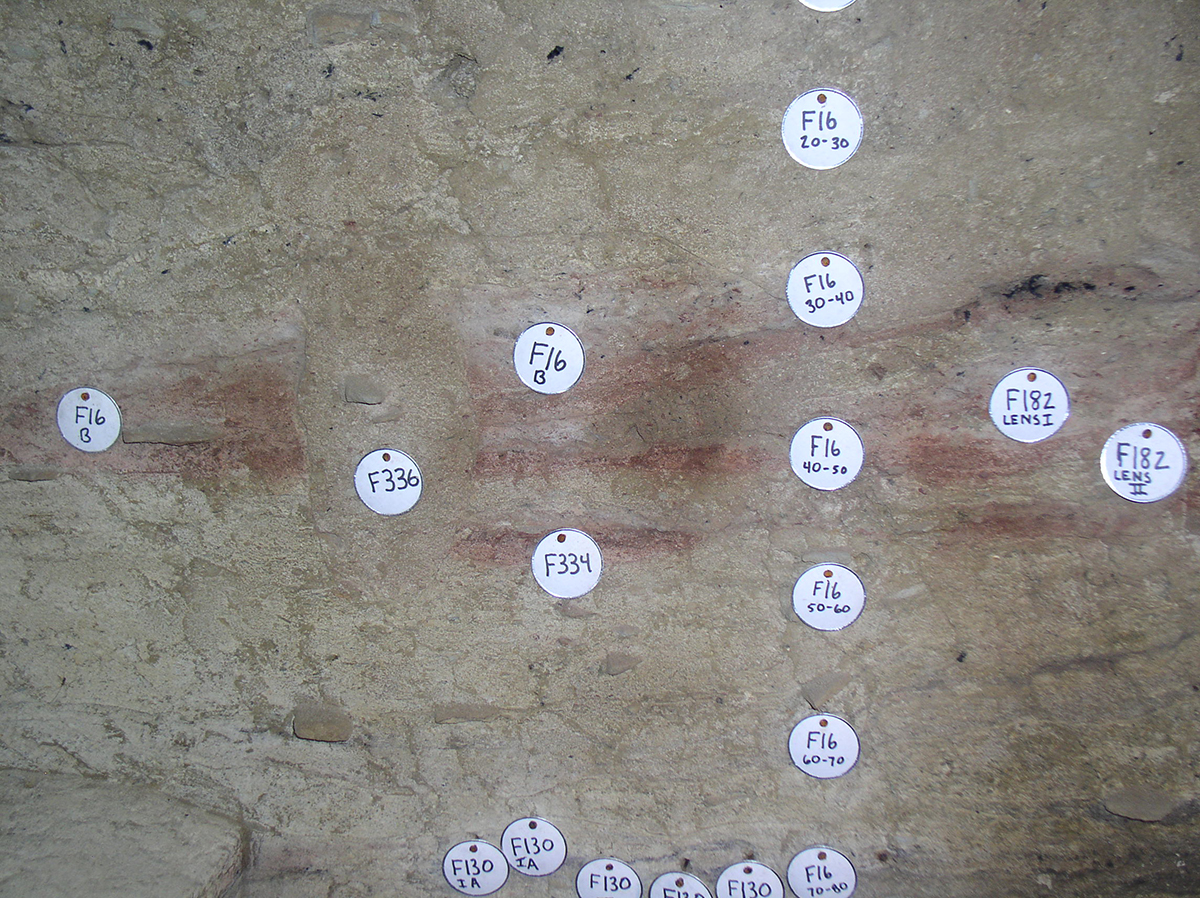The Meadowcroft Rockshelter is a National Historic Landmark and a remarkable archaeological site which documents the presence of prehistoric people in Western Pennsylvania for at least the last 19,000 years.
Here are the top 10 features of the site … drumroll please …
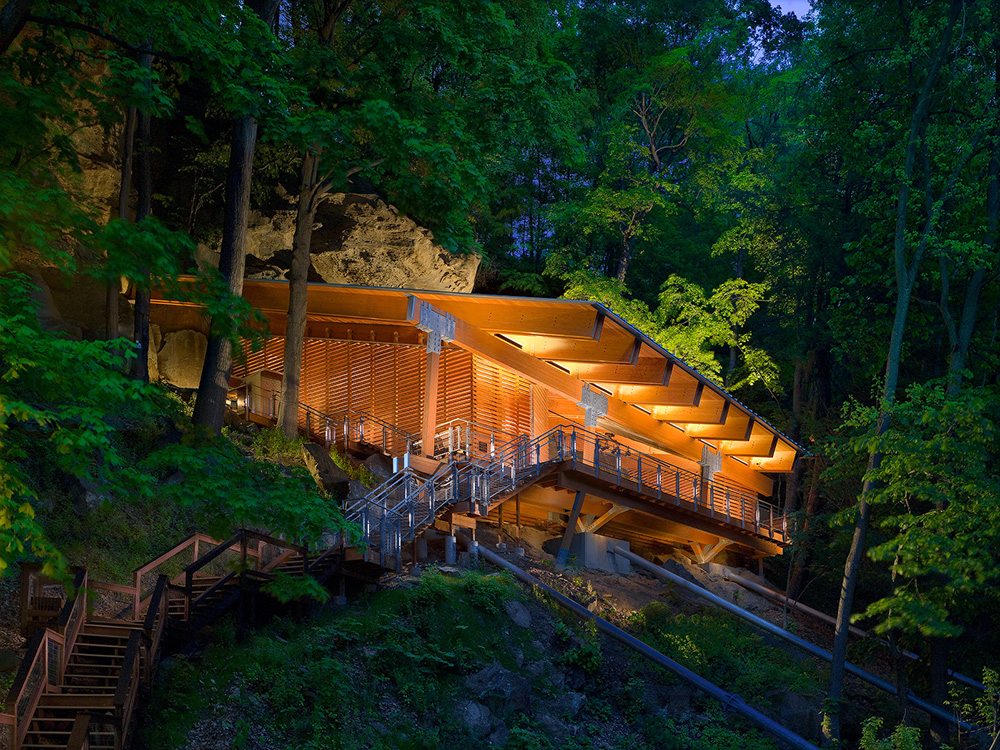
10. The Modern Enclosure
This visitor-friendly enclosure, opened in 2008, enhances the experience of visiting the site. This enclosure protects the archaeological resource, allows for continued scientific study, and provides the optimum view of the excavation. As world-renowned archaeologist James M. Adovasio has said many times, “Even if there were no archaeological site here, it’s worth coming just to see this building.”
9. A Stack of Firepits
Located on the eastern face of the excavation is a stack of ancient firepits built one upon another with remnants of charcoal, ash, and the tell-tale reddish color of sandstone particles which have been exposed to the heat of fire. This is tangible evidence of the campfires built by prehistoric visitors to the site until a major rock fall occurred around 1,500 years ago, which forced a shift in the center of activity under the rock overhang.
8. Over One Million Plant Remains
The archaeological excavation uncovered 1.4 million plant remains including material such as pollen, seeds, and nut hulls. This material not only provides information about what was growing here over the past 19,000 years but, in some cases, provides information about what the people who used the site were eating.
7. Almost a Million Animal Remains
The excavation at Meadowcroft produced 956,000 animal remains. Over 90 percent of these remains are the result of hawks and owls regurgitating pellets containing small mammal bones. However, there are some bones from species, such as elk, deer, and turkey, which show cut marks indicating the animals were butchered by people. Two examples of animal remains that are still present in the excavation include a freshwater mollusk shell left behind in a firepit and a few deer bones now exposed in the excavation walls.
6. 20,000 Artifacts
Artifacts are objects which have been made or modified by people. The Meadowcroft excavation produced 20,000 artifacts. These include stone and bone tools, pottery sherds, basketry fragments, and all the small flakes of stone left over from manufacturing or re-sharpening stone projectile points and blades. One of the most important artifacts from the site is the Miller Lanceolate Point recovered from a level that dates to 12,000 years ago.
5. Catastrophic Roof Collapses
The excavated area as well as the entire hillside around the site is littered with rock of various sizes. Over the millennia, as the cliff face and the rock overhang eroded, pieces of rock tumbled down. Inside the modern enclosure are two examples of catastrophic collapses where extremely large rocks dislodged and crashed to the floor of the Rockshelter. One of these events took place around 12,000 years ago and the other between A.D. 300-600.
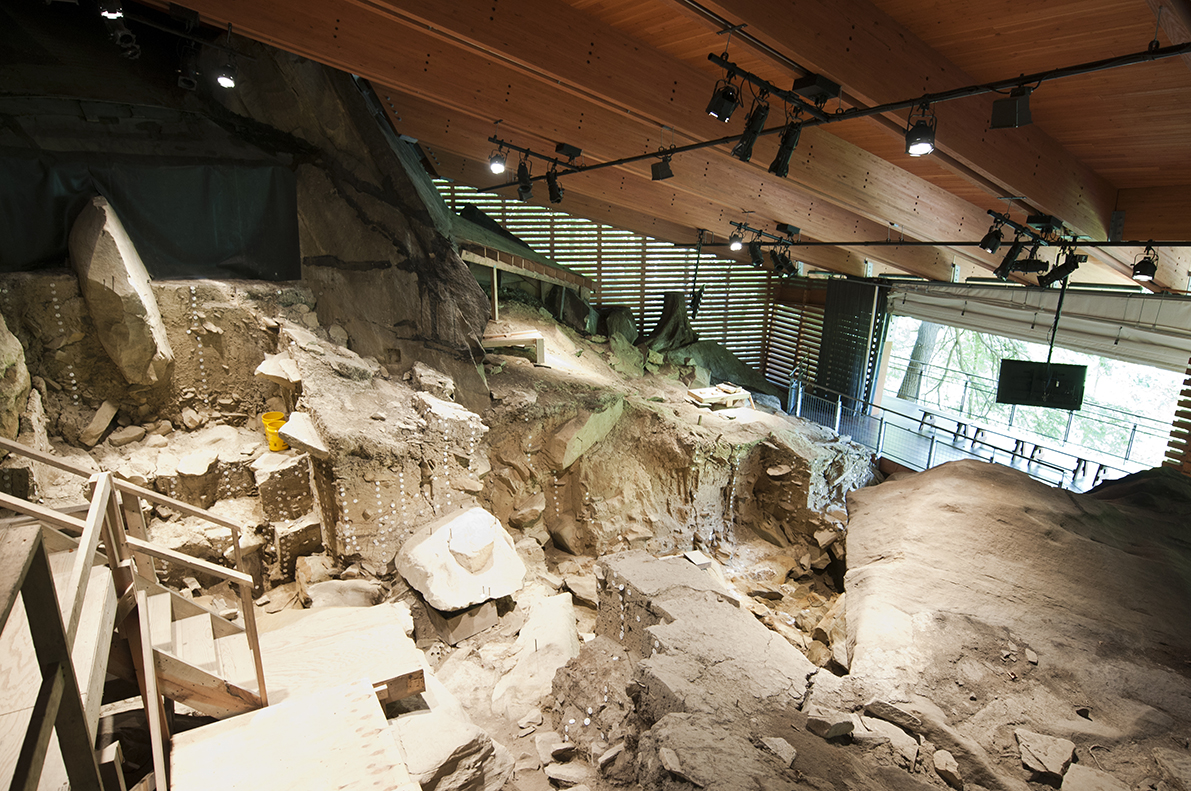
4. The Rock Feature Itself
The Rockshelter is an impressive geological feature. The Morgantown-Connellsville sandstone was undercut by the waters of Cross Creek over tens of thousands of years. This resulted in the large overhang which provided shelter for prehistoric people and made a great place to camp.
3. Ice Age Firepit
In the center of the site lies the partially excavated remains of a firepit which dates to the end of the last ice age. While the glaciers never got any closer to Meadowcroft than 50 miles to the north, by the time people arrived at Meadowcroft 19,000 years ago, the glacial front had already retreated north beyond the present-day border between Pennsylvania and New York.
2. The Groundhog
Against the rock wall at the back of the site is the spot where, on Nov. 12, 1955, Meadowcroft discoverer Albert Miller found artifacts excavated by a groundhog. As an amateur archaeologist, Miller knew his discovery should be excavated professionally, so he spent the next 18 years trying to find a professional who was interested. In 1973, Dr. James Adovasio of the University of Pittsburgh conducted the first field school excavation. By 1974, everyone knew this site was something very special.
1. Awesomeness!
The number one feature of the Meadowcroft Rockshelter is (drumroll again …) the feeling you get when you look down at Cross Creek and realize that 19,000 years ago, some of the very first people to enter the North American continent were standing at this very same spot! And just a few feet away from you, underneath the same rock overhang you’re standing under, the evidence of their visits is still here.
Explore the Rockshelter for yourself during an Insider Tour hosted by James M. Adovasio, Ph.D., who achieved international acclaim with his archeological excavation of the Rockshelter in 1973. Dr. Adovasio will present a lecture and lead a special tour of the site on Sunday, Oct. 14 at 1 p.m. and Saturday, Nov. 3 at 10 a.m. Please register online.
You can also explore the Rockshelter through the First Peoples Archaeology project and a gigapan of the Meadowcroft Rockshelter.
David Scofield is the director of Meadowcroft Rockshelter and Historic Village.
